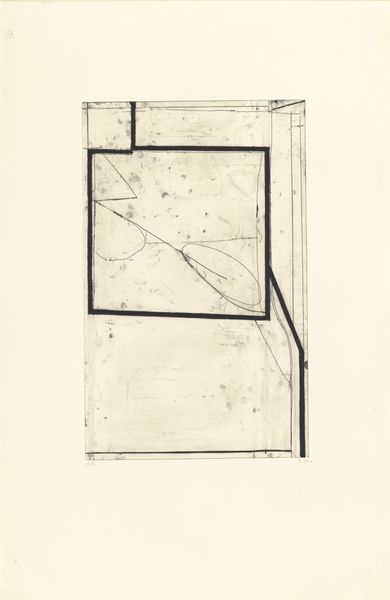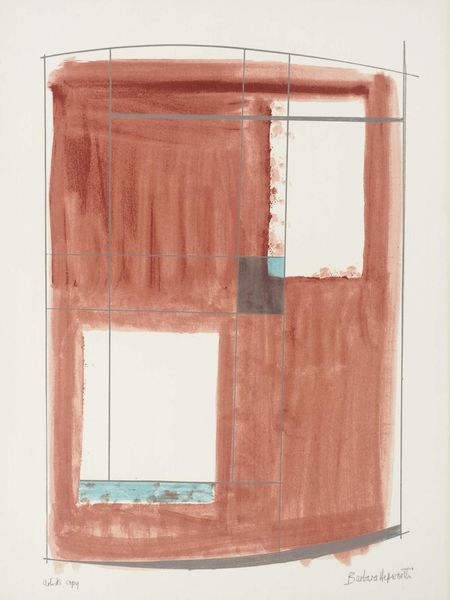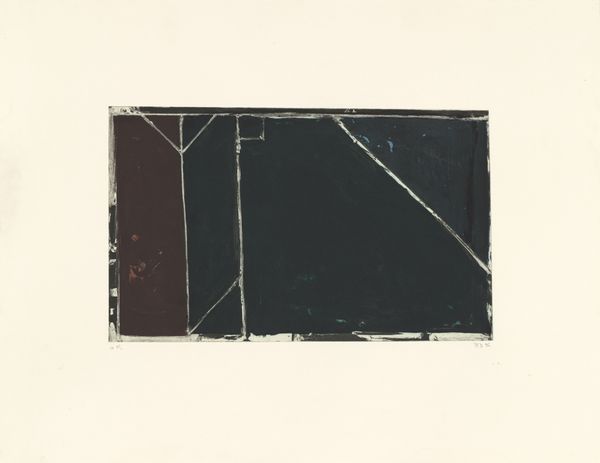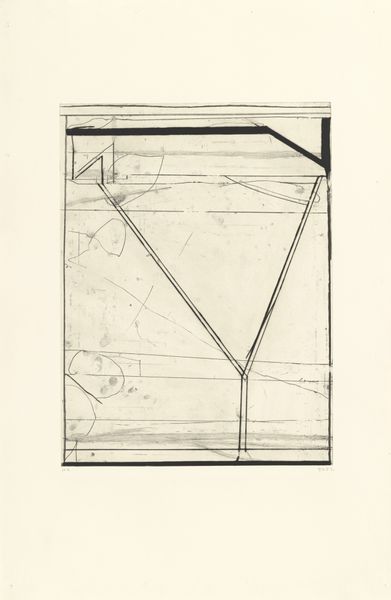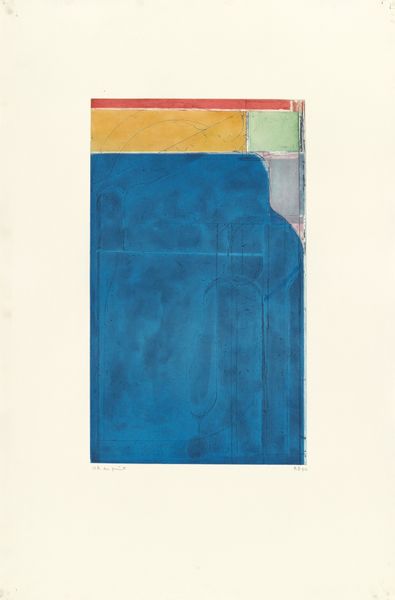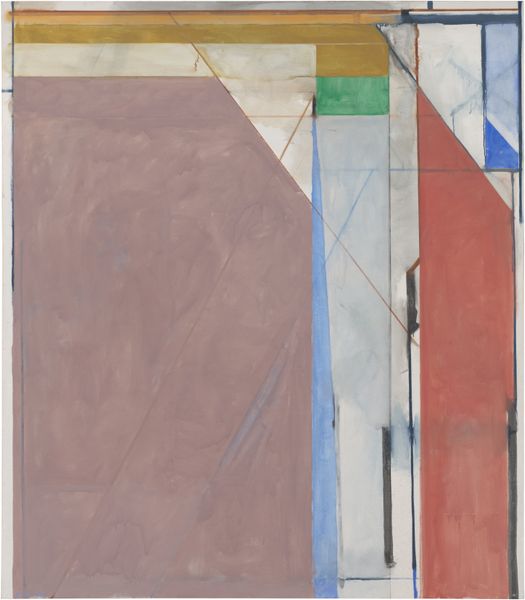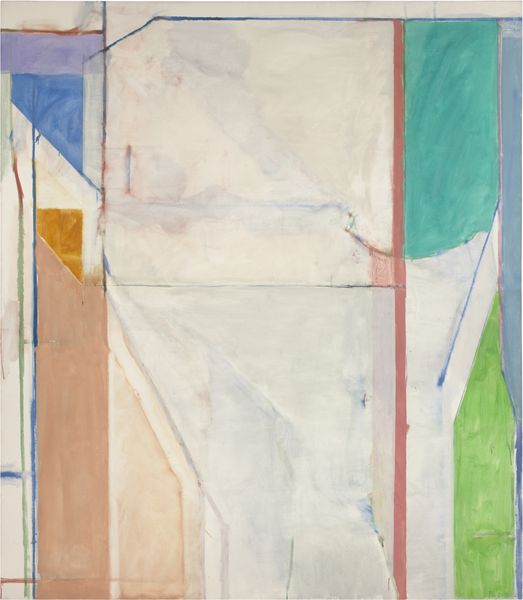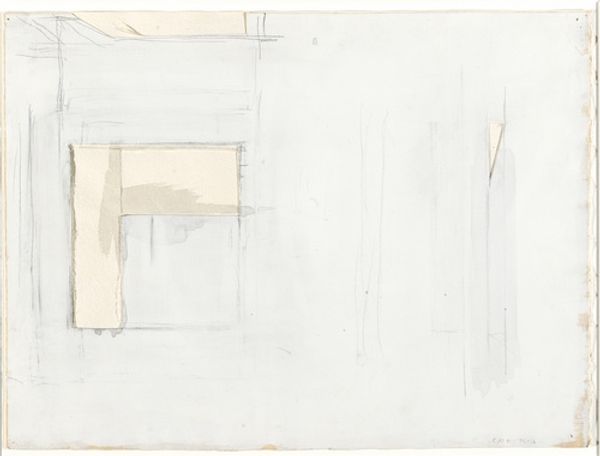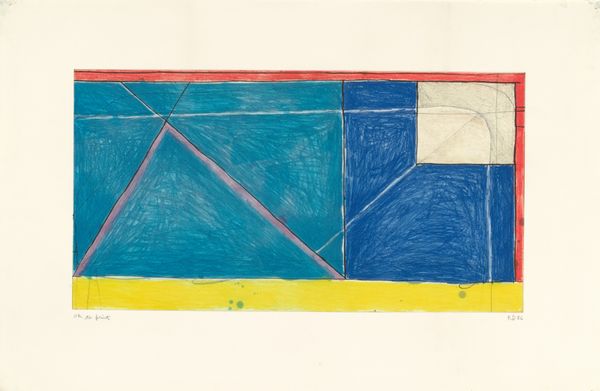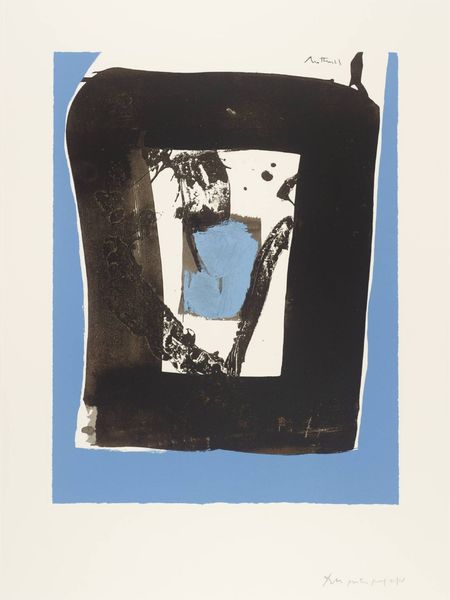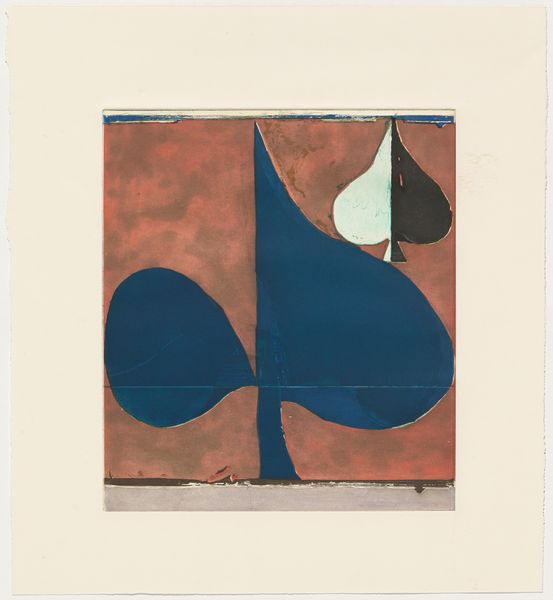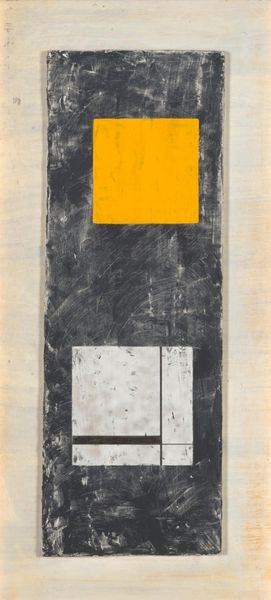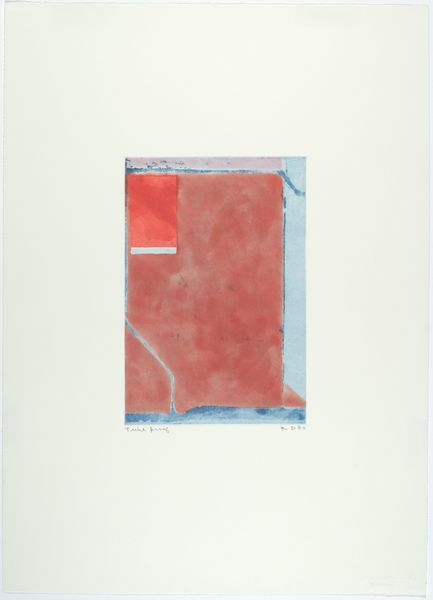
mixed-media, print, acrylic-paint
#
mixed-media
# print
#
light coloured
#
acrylic-paint
#
form
#
bay-area-figurative-movement
#
geometric-abstraction
#
abstraction
#
line
#
modernism
#
hard-edge-painting
Dimensions: image: 60.6 x 38.1 cm (23 7/8 x 15 in.) sheet: 94 x 67.3 cm (37 x 26 1/2 in.)
Copyright: National Gallery of Art: CC0 1.0
Curator: This is Richard Diebenkorn’s "Two Way II" from 1982, a mixed-media print with acrylic paint. Editor: It’s striking. The cool blues, the severe lines – almost architectural, but disrupted by the loose, reddish scrawls inside the central form. It has an immediate feeling of… tension. Curator: Indeed. Diebenkorn often explored the interplay between geometric abstraction and a more gestural, expressive mark-making. This piece reflects his interest in modernism but also engages with earlier historical approaches to painting space, reminiscent of constructivist ideas on the relationship between plane and depth. Editor: You can really see how he’s playing with those formal tensions, it gives the impression of flat shapes built from concrete materials but with unexpected instability, doesn’t it? The materiality, for me, is fascinating: mixed-media on paper suggesting so much weight. And the layering – is there any suggestion of the hand in that at all? Curator: I think we must examine the print techniques deployed, such as aquatint. I’d note that Diebenkorn made some incredibly considered material choices – which have their own set of historical resonances given the context of Cold War production. It becomes a question of access: of what kind of cultural narratives the forms he created were implicated in. What possibilities could exist in the field for the future through line? Editor: Yes, precisely! I think to grasp the print’s influence, we must consider production. That is, how these artistic techniques enable him to get the look of spontaneity which nonetheless relies on skilled execution: that allows it to echo many others interested in form as such in the mid 20th Century – for me, those ideas offer a perspective on the labour and investment that go into artworks, rather than how these are presented at face value. Curator: That consideration allows an entry point, definitely. Diebenkorn here provides us a window – but is it a window offering new perspectives or reinforcing existing structures of seeing and interpreting? Editor: Precisely the question. Ultimately, I think the interplay he achieved between method and materials means that “Two Way II” stands alone to continue inspiring. Curator: And engaging conversations that reveal a deeper interrogation of ourselves, no?
Comments
No comments
Be the first to comment and join the conversation on the ultimate creative platform.
